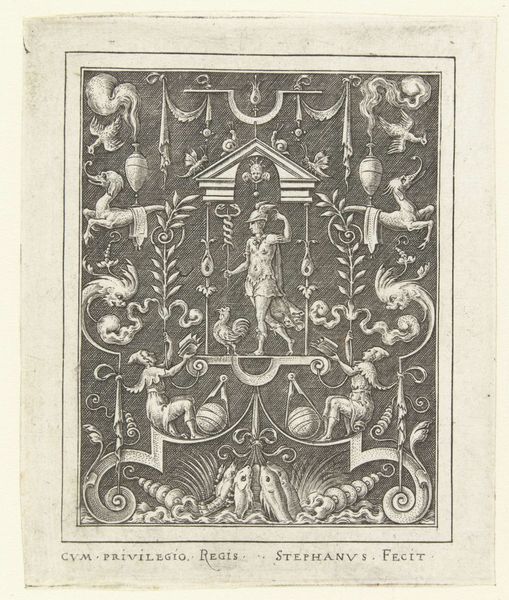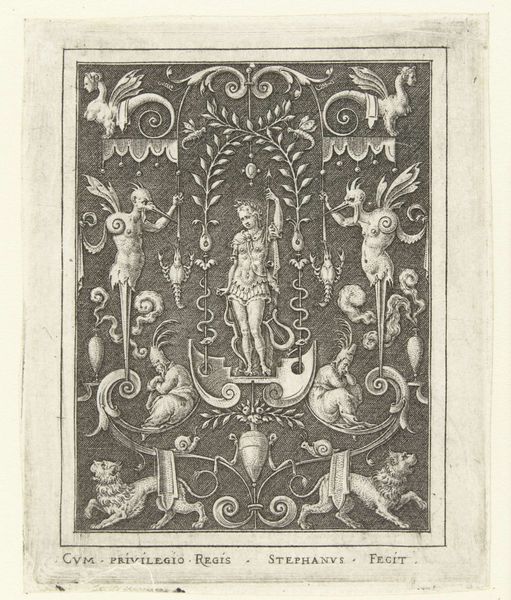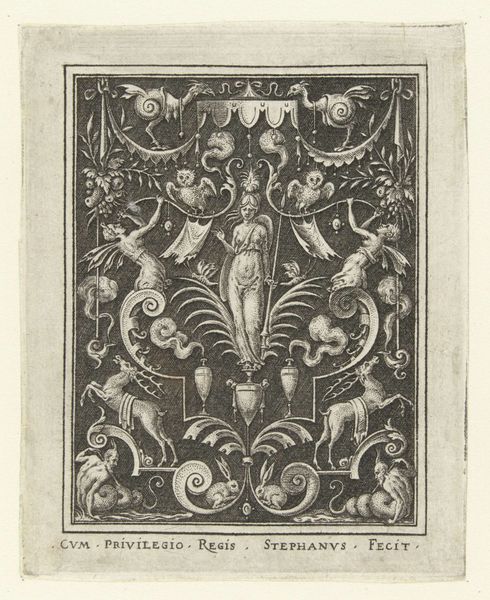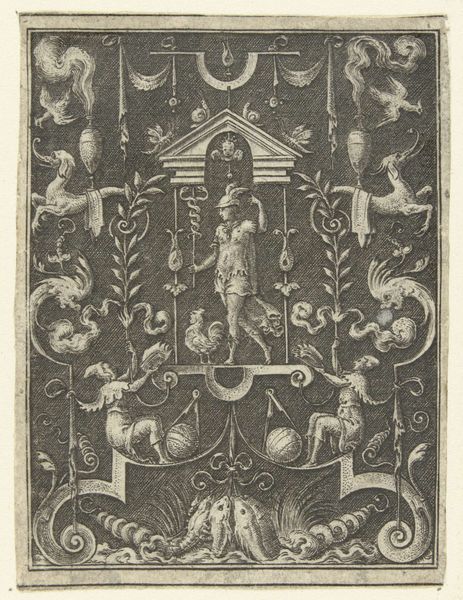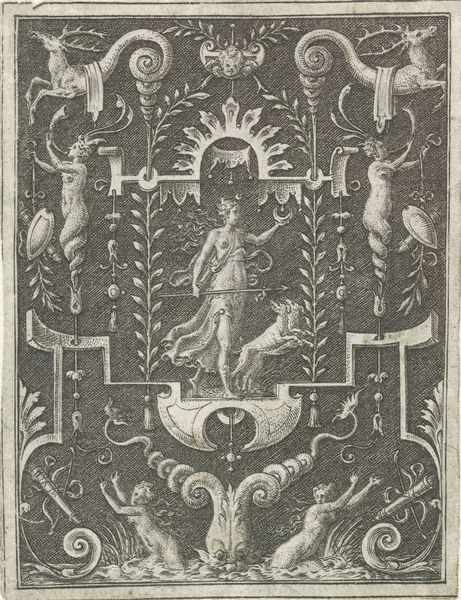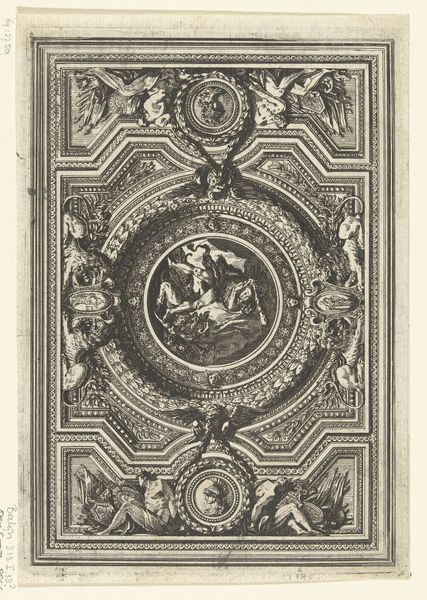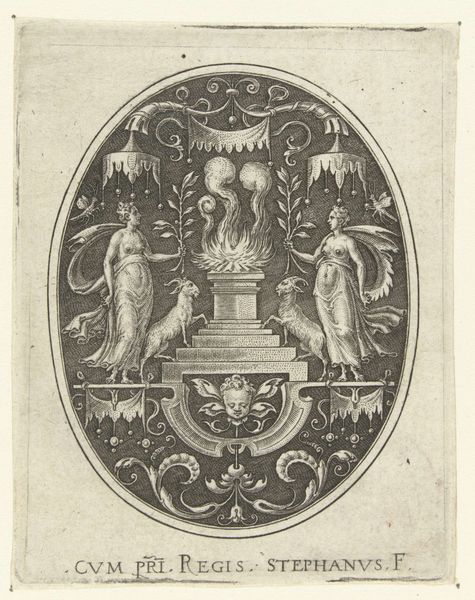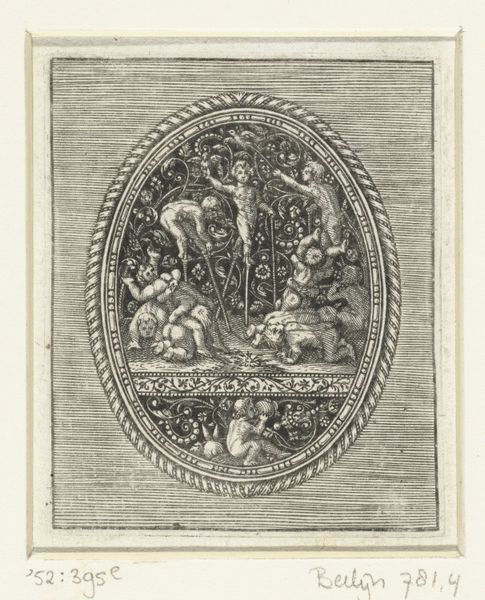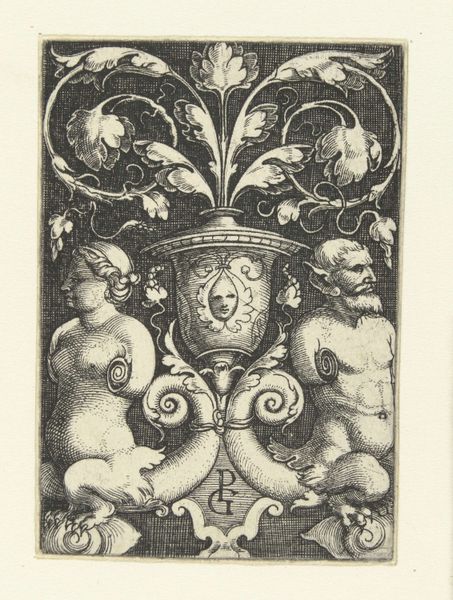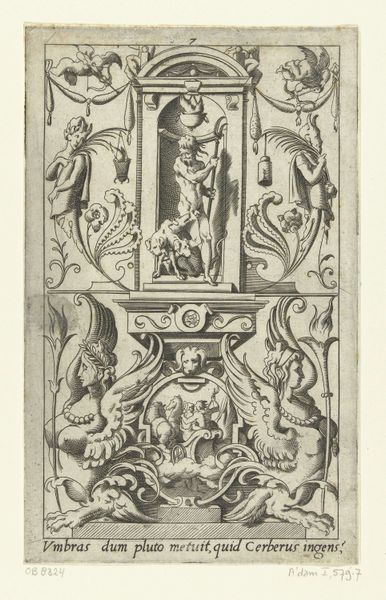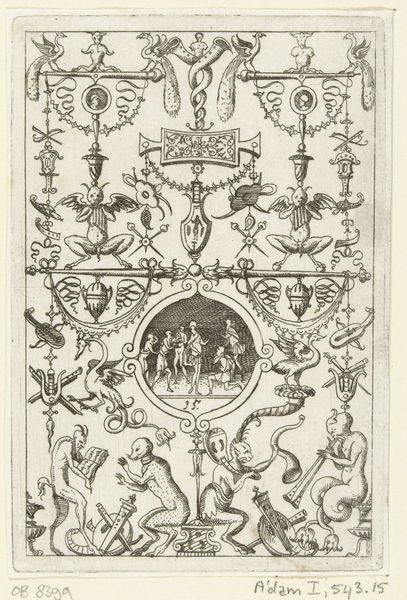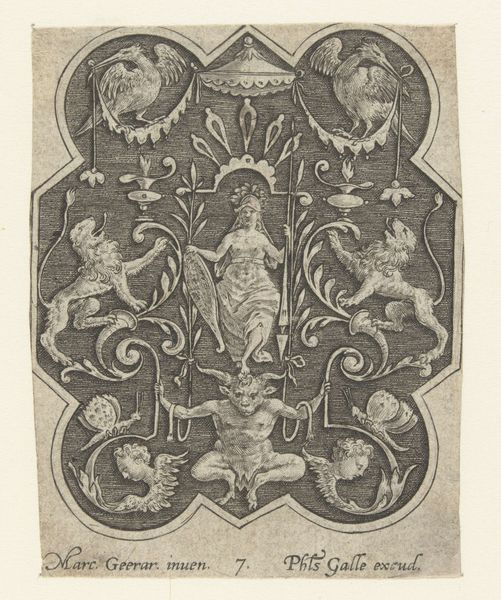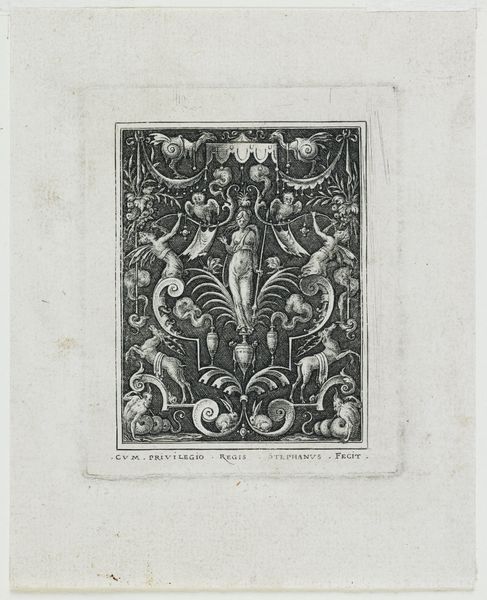
#
comic strip sketch
#
pen drawing
#
pen illustration
#
pen sketch
#
old engraving style
#
pen-ink sketch
#
pen work
#
coloring book page
#
doodle art
#
intricate and detailed
Dimensions: height 79 mm, width 65 mm
Copyright: Rijks Museum: Open Domain
Editor: This is "Mars," a pen drawing by Etienne Delaune, dating from sometime between 1528 and 1583. It's so intricate! There are so many different figures crammed into this relatively small space. What is all this imagery trying to communicate? Curator: It's a fascinating piece! Notice how the central figure of Mars, the Roman god of war, is flanked by winged putti and intertwined with elements from the natural world. This blend isn't accidental. Consider the symbolic weight of Mars: representing not just war, but also virility and protection. Now, what about those playful putti and the surrounding flora and fauna? Editor: They almost seem to soften Mars’ militaristic association… do they represent aspects of peace or maybe abundance? Curator: Precisely. The artist sets up a powerful tension between war and harmony, reflecting a broader cultural fascination with these dualities during the Renaissance. The careful arrangement suggests the desired dominance of one over the other, or even a hopeful convergence. Editor: So it’s not *just* a pretty drawing? There’s almost a political or moral statement embedded within all these figures? Curator: Yes, and more. Think about the chosen animals, the decorative vases. What do *they* evoke? Everything is deliberate. Delaune uses potent, recognisable iconography to invite the viewer to contemplate universal ideas: conflict, peace, beauty, power, transience… it’s all there, embedded in a kind of symbolic dance. Editor: Wow, I would have missed so much of that. I guess there is much more here than just the initial impression. Curator: Absolutely. Art often operates on many levels. With familiarity with its visual language we are better placed to truly understand its intent and significance.
Comments
No comments
Be the first to comment and join the conversation on the ultimate creative platform.
